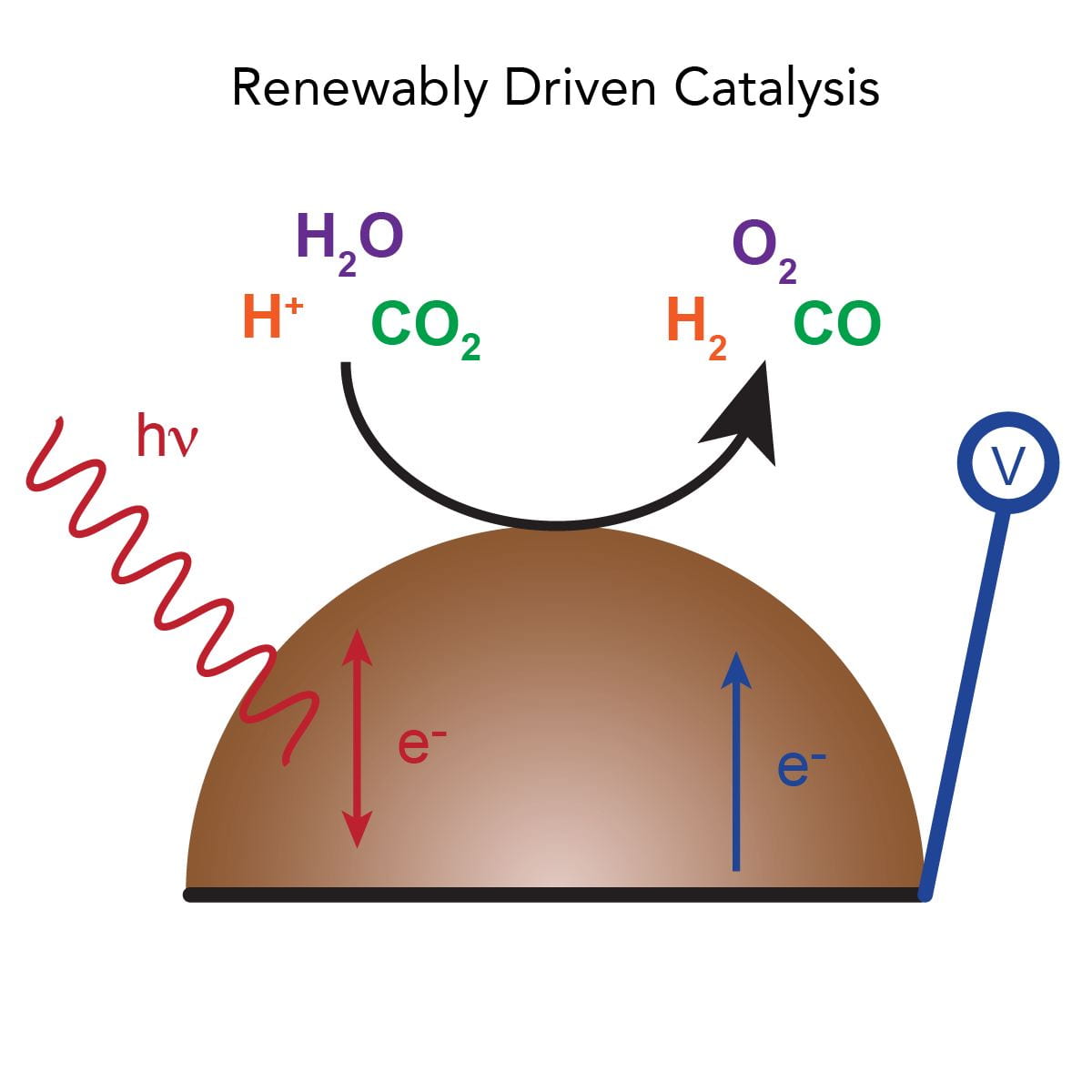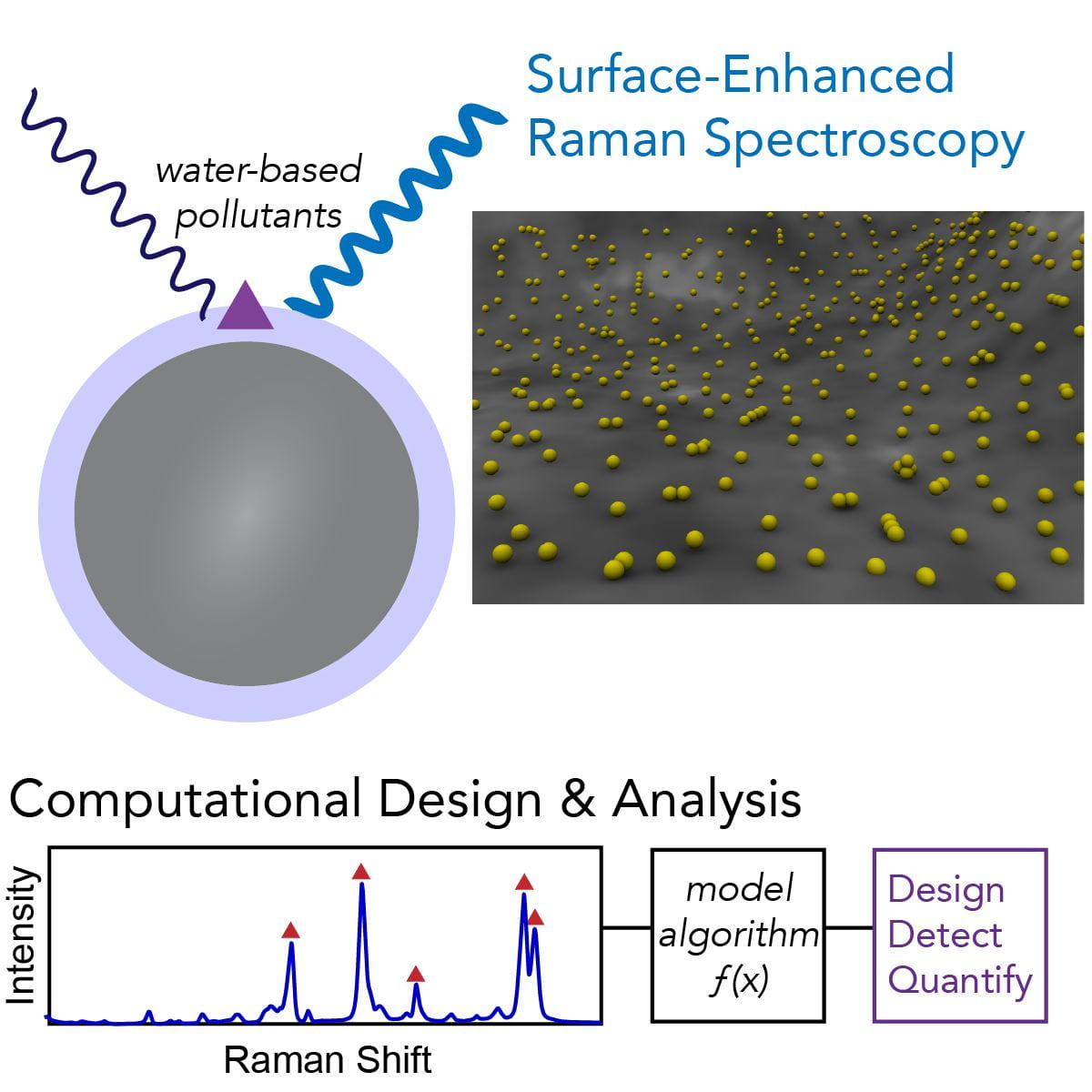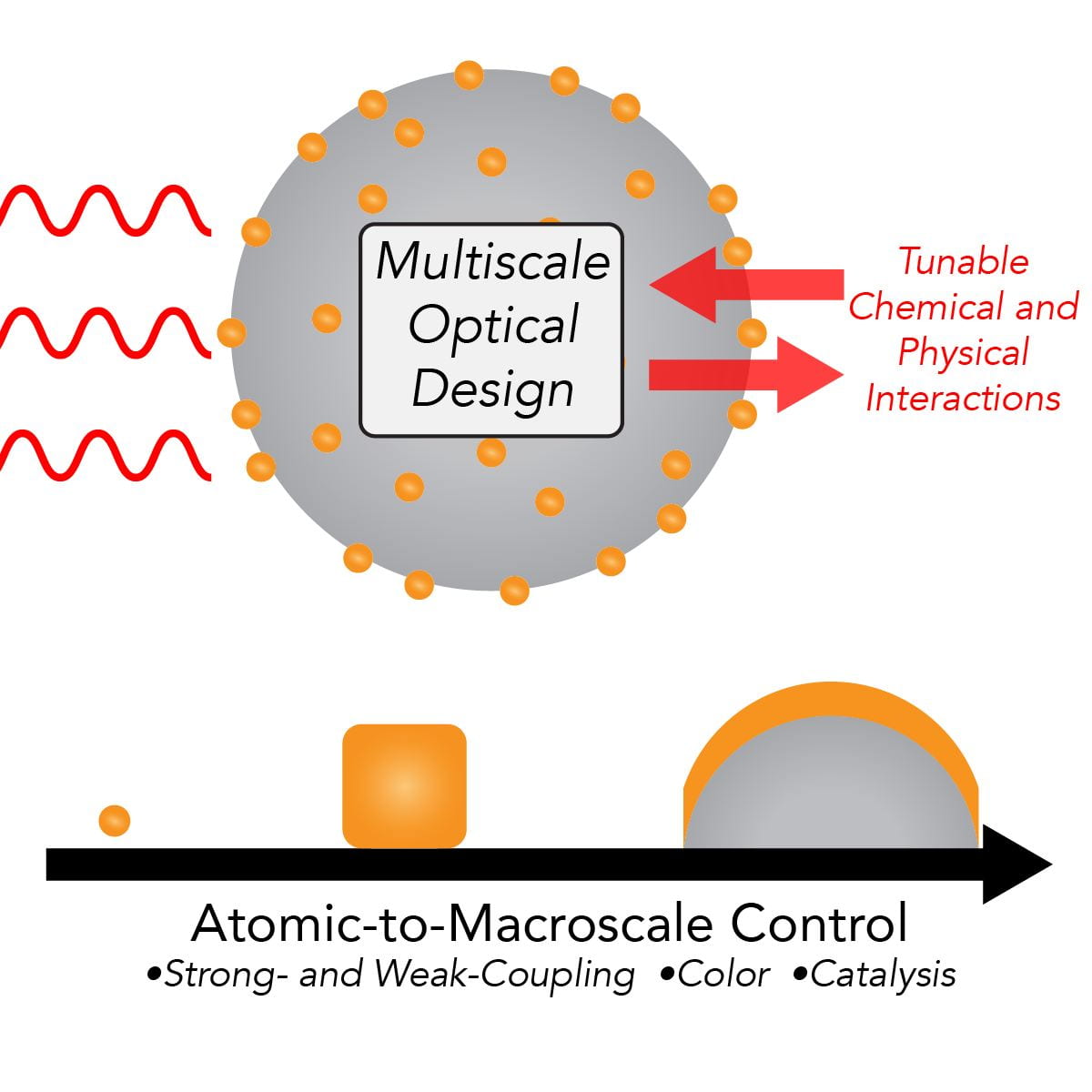Sustainable Energy

We will investigate how metallic nanoparticles can renewably generate fuels and chemicals, both by hydrogen generation and carbon dioxide recycling. We will develop novel catalyst materials and investigate photocatalytic and electrocatalytic mechanisms. In particular, we will focus on understanding the chemical and physical processes that underly plasmonic photocatalysis and direct electrocatalysis.
Data-Driven Detection

We will use Raman spectroscopy for standoff detection and for monitoring trace pollutants in water systems. This includes the use of statistics, machine learning, and computational approaches to understand the Raman spectra of complex mixtures. We will use the same data-driven approaches to develop new materials for SERS (surface-enhanced Raman spectroscopy) with improved reliability and versatility.
Photonics

We will design optical materials with functional units that span from the atomic to the macroscopic. These materials will integrate motifs with a robust optical response with those with unique chemical functionality. Much of our focus will be on the interplay between these chemical processes and efficient absorption throughout the UV, visible, and near-infrared. Applications include pollutant photodegradation and enhanced photocatalysis.
